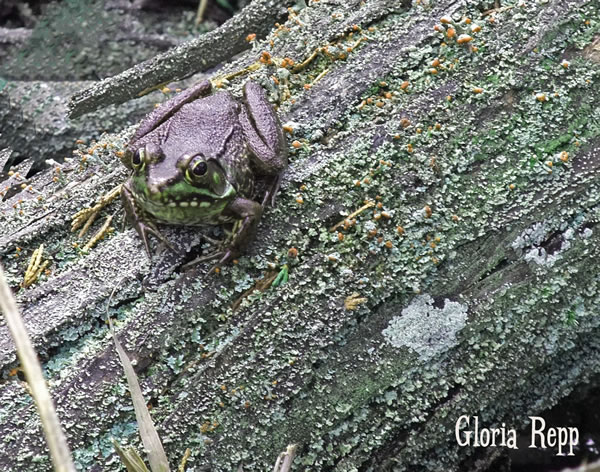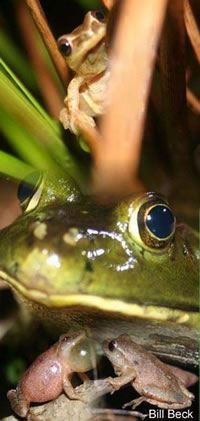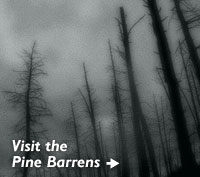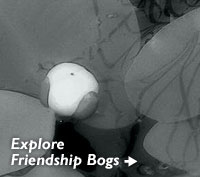Meet the Frogs of the Pine Barrens
Pine Barrens Treefrog
Hyla andersoni
Description: The Pine Barrens Treefrog is a tiny glistening frog of emerald green that is considered one of the most beautiful frogs in the world. It has a lavender stripe on each side and patches of orange on its feet, as well as other decorative touches of white and orange. It grows to almost two inches long.
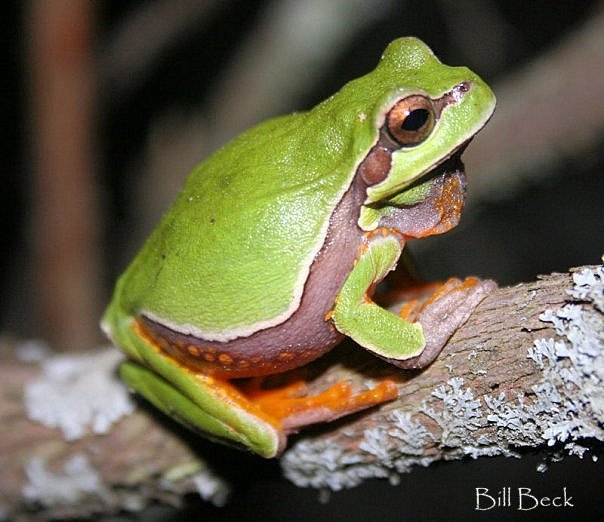
Sticky pads on its fingers and toes are useful equipment that make it an excellent climber.
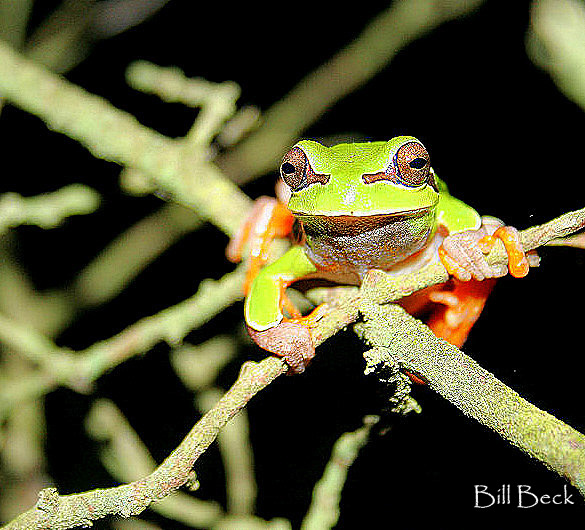
Call: Its call is a high-pitched, rapid wonk, wonk, wonk. Once you hear it, you will never forget.
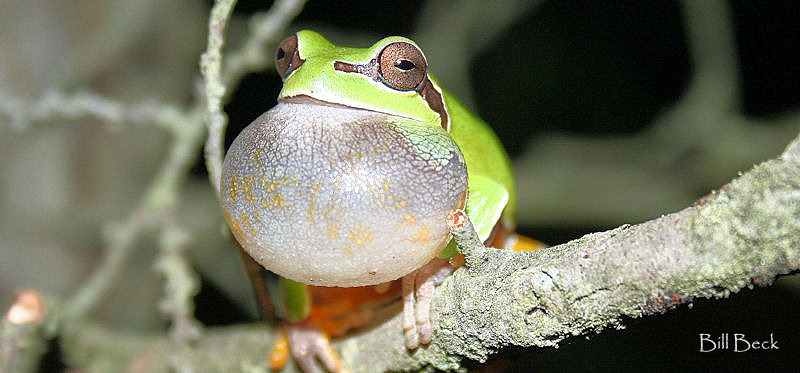
Range: Because this treefrog does best in acid water, there are very few places in which it can live. One of them is the Pine Barrens of New Jersey. Two or three small groups have been found in the Carolinas and in Florida.
Habitat: The Pine Barrens Treefrog prefers cedar swamps, sphagnum bogs, and mossy, old cranberry bogs. It often lives in pools during part of the year, but in the summer when those dry up, it moves to shaded brushy areas.
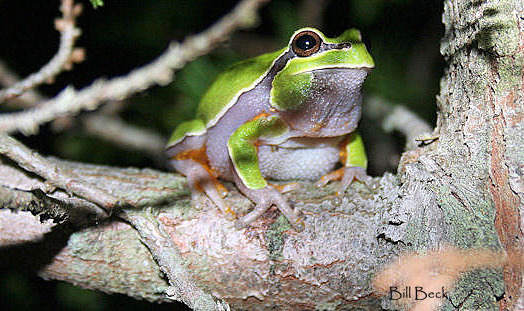
Food: It eats flies, small slugs, snails, beetles, moths, and other small insects.
Behavior: In summer, this treefrog is difficult to find because its color makes it almost invisible as it perches in a shrub or on a branch.

The Pine Barrens Treefrog is an endangered frog. In some areas, it no longer has the swamps, bogs, and pools it needs in order to stay alive. People have taken over the land, drained the water, and built their houses.
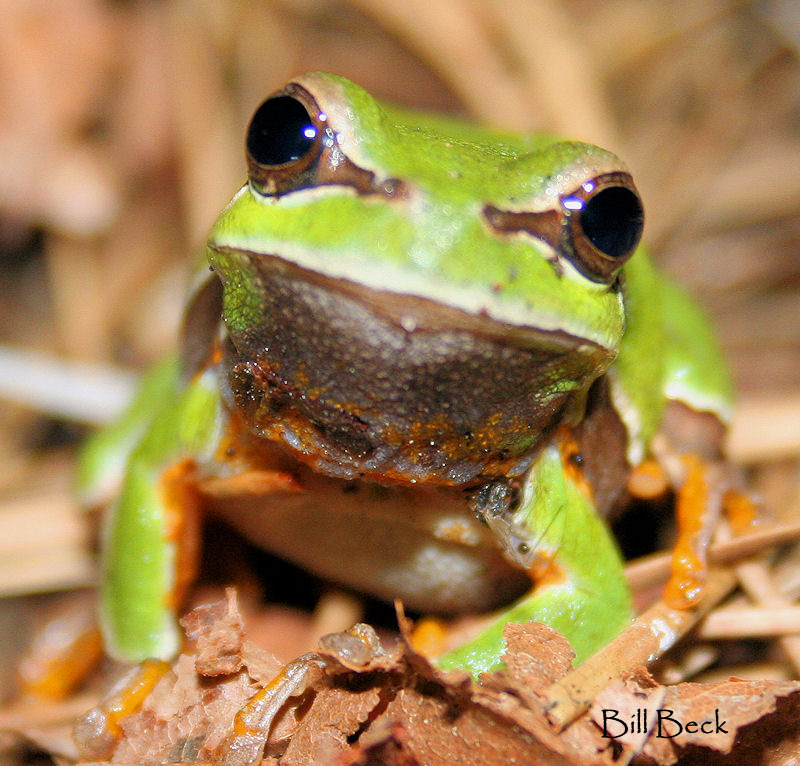
Southern Leopard Frog
Rana utricularia
Description: This frog is green or light brown, with a pointed snout and roundish dark spots that make its name easy to remember. Sometimes it grows as long as five inches.
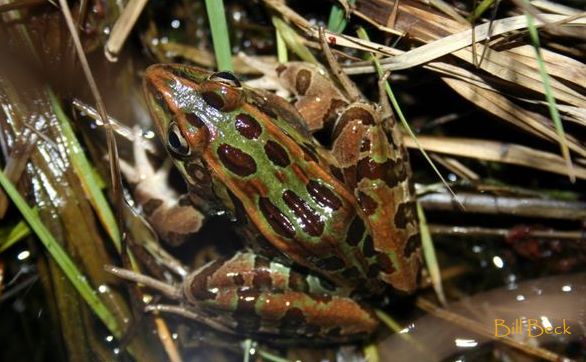
The leopard was created with colors that serve as ideal camouflage, and it seems to disappear when it travels through grassy or marshy areas.
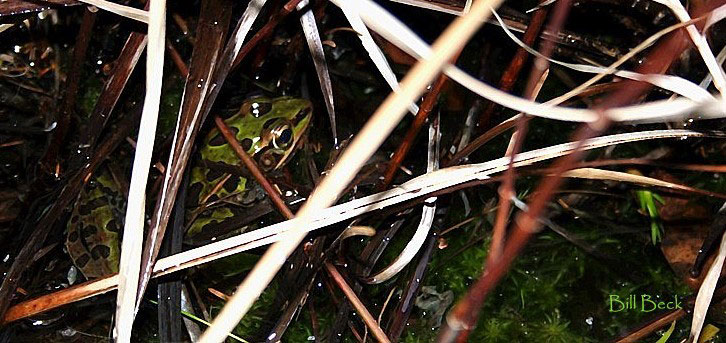
Call: The leopard gives a low chuck-chuck-chuck-ing call that goes so fast it seems to stutter.
Range: The leopard is the “spotted frog” of the southern states, but it also ranges into the Midwest and as far north as New York City. It is commonly seen in the Pine Barrens.
Habitat: It is not hard to please, but likes to live in freshwater ponds, streams, and marshes.
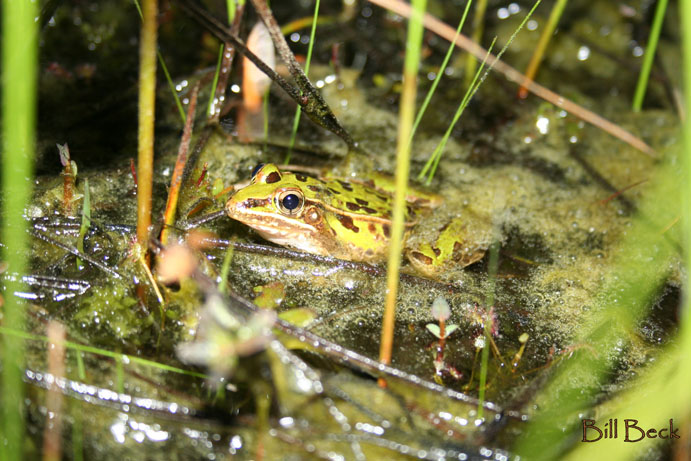
Food: It eats earthworms, spiders, and any insect it can catch and fit into its mouth.
Behavior: The leopard is most active at night and spends much of its life in water. During the summer, it wanders away from the water into grassy or marshy areas where it can find shelter and shade.
It is an excellent jumper and often escapes from a predator, like a raccoon, by making a tricky dive. As soon as it sees the coon, it dives into the water, then it makes a sharp turn while still underwater and comes up in an unexpected spot. Now it can hide in a plant while the coon is looking for it in the wrong place.
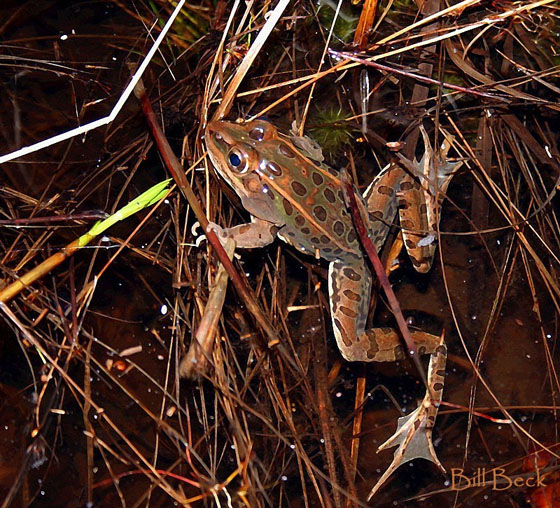
Gray Treefrog
Hyla versicolor
Description: This small frog has lumpy-looking skin that may be different shades of brown, gray, green, or even white. Sometimes its skin slowly changes color from gray to green, depending on where it is sitting. Like most treefrogs, it is equipped with suction cups on the tip of each toe to help it climb. It grows to only two inches long.
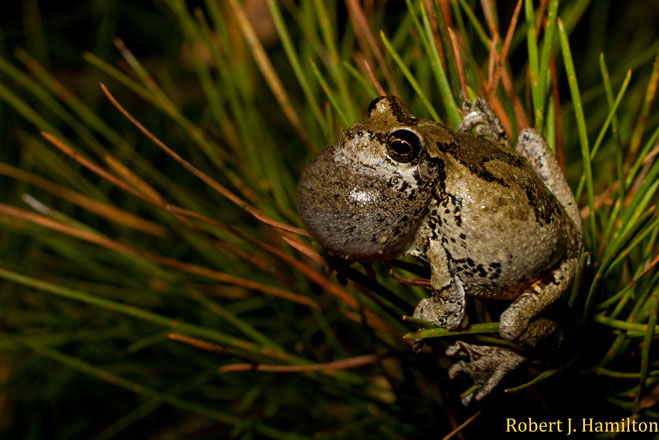
Call: When evening darkens the water, the Gray Treefrog begins to call with a short, beautiful trill. Every few seconds, it calls again.

Range: It lives throughout most of the United States, including the Pine Barrens.
Habitat: The Gray Treefrog much prefers to have a tree for its home. It likes to settle near ponds and pools, especially those that are surrounded by shrubs or trees.
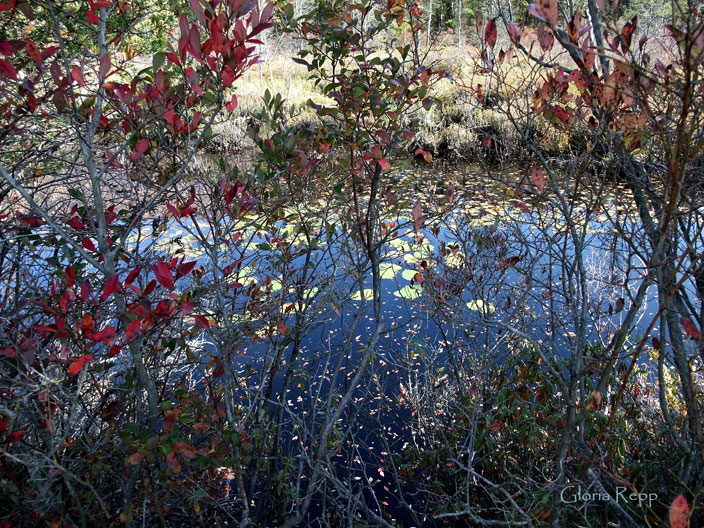
Food: It eats flies, spiders, ants, centipedes, other small insects, and a few plants.
Behavior: The Gray Treefrog spends spend most of its time climbing through shrubs or trees, looking for food.
Carpenter Frog
Rana virgatipes
Description: The Carpenter Frog is brownish or olive-gray, with a slender head and four yellowish stripes down its back. It grows to about two and a half inches long.
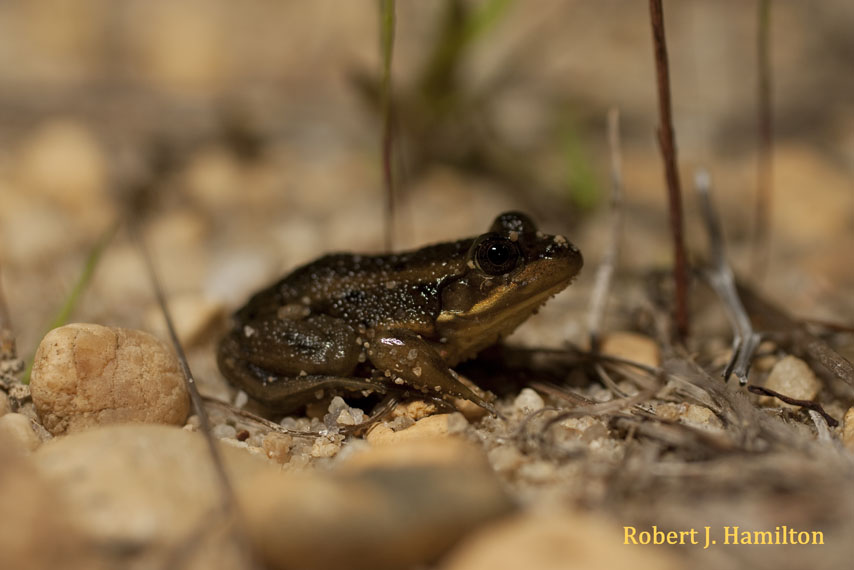
Call: This little frog has a big voice that makes a series of sharp rapping sounds, as if two carpenters were hammering nails. He and his friends and relatives gather in large groups during mating season, and their hammering is loud enough to keep you awake at night.
Range: The Carpenter Frog is common in the New Jersey Pine Barrens. Once in a while it can be seen or heard elsewhere, but only in the eastern United States.
Habitat: It prefers the acid water of Pine Barrens cedar bogs and swamps. The Carpenter’s colors are cleverly designed to make it hard for a predator who is hunting in the tea-colored cedar water. Is it seeing a frog, or blades of yellow grass, or just water? Try looking for a pair of bright eyes peeking out of the water, wherever sphagnum moss grows.
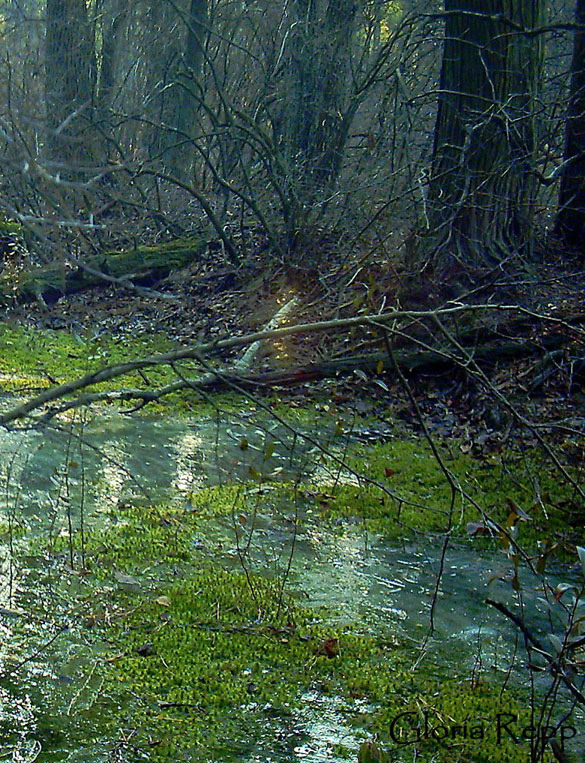
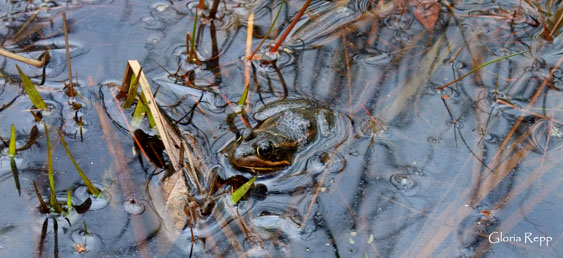
Food: It eats ants, spiders, and small insects.
Behavior: The Carpenter is most active at night. It hunts for food on the ground and doesn’t go very far from the water’s edge. It tends to be jumpy, and when it is alarmed, it leaps into the water to hide under floating islands of plants.
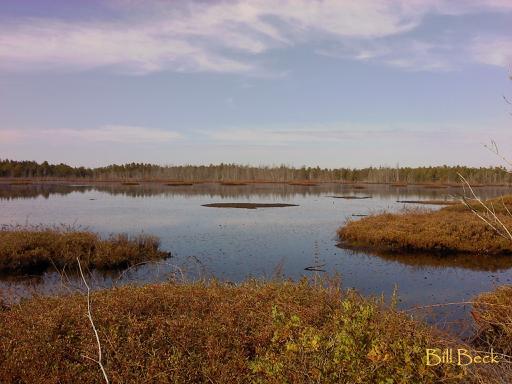
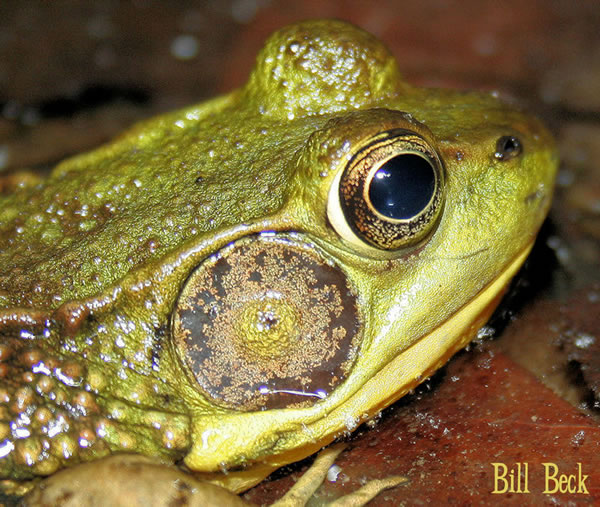
Call: The Green Frog’s call is a throaty gunk! gung! or a goonk! gunk! gunk! They may call during the day or night. The young Green Frogs have an alarm call as they jump into the water: eeek!
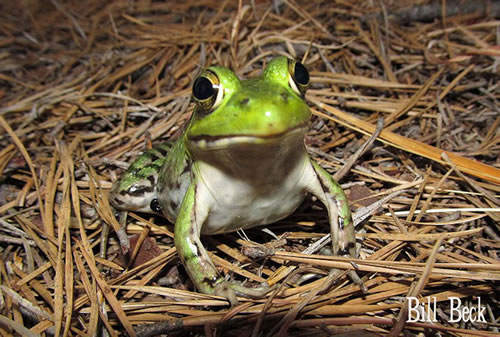
Range: Green Frogs can usually be found in most of the eastern states, including the New Jersey Pine Barrens.
Habitat: They live wherever they can find fresh water. They like bogs, ponds, road-side ditches, lakes, swamps, and streams.
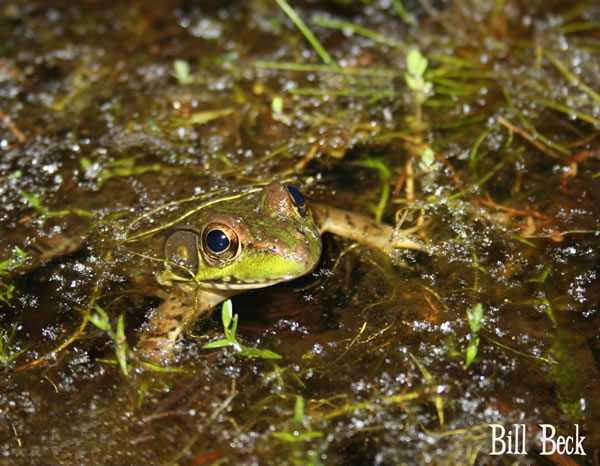
Food: Green Frogs usually eat insects, worms, and, once in a while, very small frogs and fish. They prefer to sit and eat whatever comes by, rather than chasing their food.
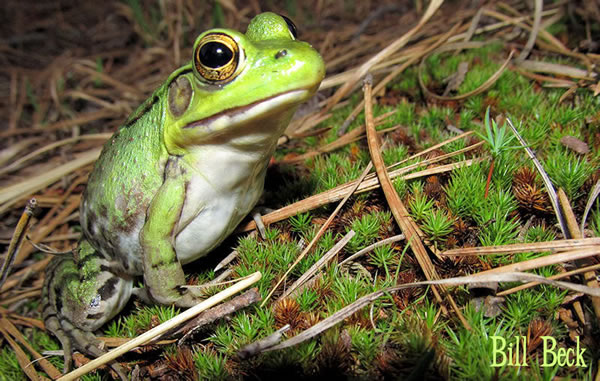
Behavior: Green Frogs are most often seen resting on the shore, but they jump into the water when frightened. This way they can leave behind their enemies that can’t swim. Sometimes, when they are perched on a fallen tree in a swamp, it is hard to see them.
